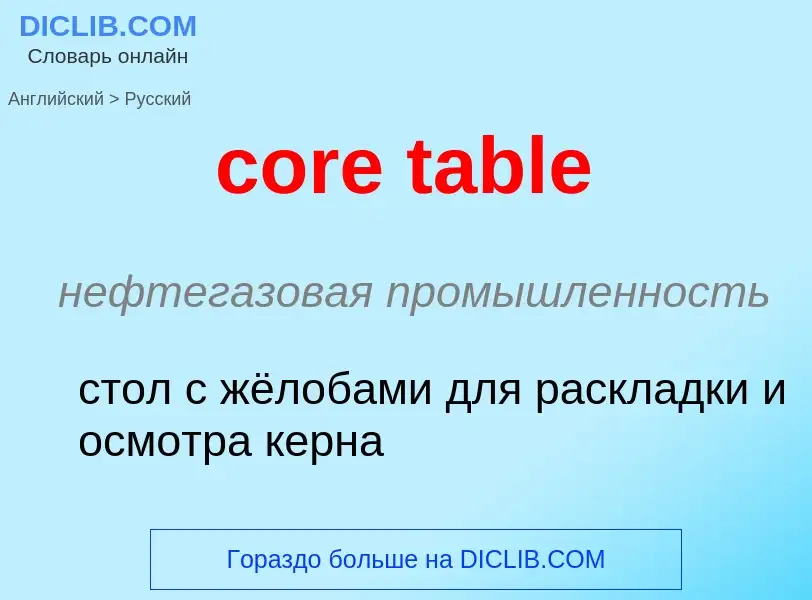Перевод и анализ слов искусственным интеллектом
На этой странице Вы можете получить подробный анализ слова или словосочетания, произведенный с помощью лучшей на сегодняшний день технологии искусственного интеллекта:
- как употребляется слово
- частота употребления
- используется оно чаще в устной или письменной речи
- варианты перевода слова
- примеры употребления (несколько фраз с переводом)
- этимология
core table - перевод на русский
нефтегазовая промышленность
стол с жёлобами для раскладки и осмотра керна
['kɔ:'mem(ə)ri]
общая лексика
ЗУ на магнитных сердечниках
тип ОЗУ, использовавшийся в ЭВМ второго поколения (конец 50-х, начало 60-х годов), вытеснен полупроводниковой памятью. Магнитный сердечник можно намагничивать в одном из двух направлений. Затем направление магнитного поля можно определять по его воздействию на электрический ток, проходящий через центр сердечника
вычислительная техника
запоминающее устройство ЭВМ на (магнитных) сердечниках
Смотрите также
Википедия

The prepared-core technique is a means of producing stone tools by first preparing common stone cores into shapes that lend themselves to knapping off flakes that closely resemble the desired tool and require only minor touch-ups to be usable.
In contrast to the production of core tools like handaxes, where cores themselves were the end product shaped and trimmed down by removal of flakes, in prepared-core technique large flakes are the product and the core is used to produce them. This shift made it faster and more resource-efficient, as multiple tools could be struck from a single piece of starting material.
Prepared core preparation techniques are grouped under the label Mode 3 technology. The best-known prepared core reduction method is the Levallois technique
Prepared core technology was likely invented independently multiple times at different locations. The regular use of Prepared core technology is associated with large-brained hominins such as Homo heidelbergensis, Neanderthals and modern humans. Its widespread use is the defining characteristic of the Middle Stone Age period in Africa and the Middle Palaeolithic (~300.000 - 40.000 years ago) in Europe.



![A 10.8×10.8 cm plane of magnetic core memory with 64 x 64 bits (4 Kb), as used in a [[CDC 6600]]. Inset shows ''word line'' architecture with two wires per bit A 10.8×10.8 cm plane of magnetic core memory with 64 x 64 bits (4 Kb), as used in a [[CDC 6600]]. Inset shows ''word line'' architecture with two wires per bit](https://commons.wikimedia.org/wiki/Special:FilePath/Ferrite core memory.jpg?width=200)




![This [[microSDHC]] card holds 8 billion bytes (8 GB). It rests on a section of magnetic-core memory that uses 64 cores to hold eight bytes. The microSDHC card holds over one billion times more bytes in much less physical space. This [[microSDHC]] card holds 8 billion bytes (8 GB). It rests on a section of magnetic-core memory that uses 64 cores to hold eight bytes. The microSDHC card holds over one billion times more bytes in much less physical space.](https://commons.wikimedia.org/wiki/Special:FilePath/8 bytes vs. 8Gbytes.jpg?width=200)
![US quarter]] for scale US quarter]] for scale](https://commons.wikimedia.org/wiki/Special:FilePath/Magnetic-core memory, 18x24 bits.jpg?width=200)

